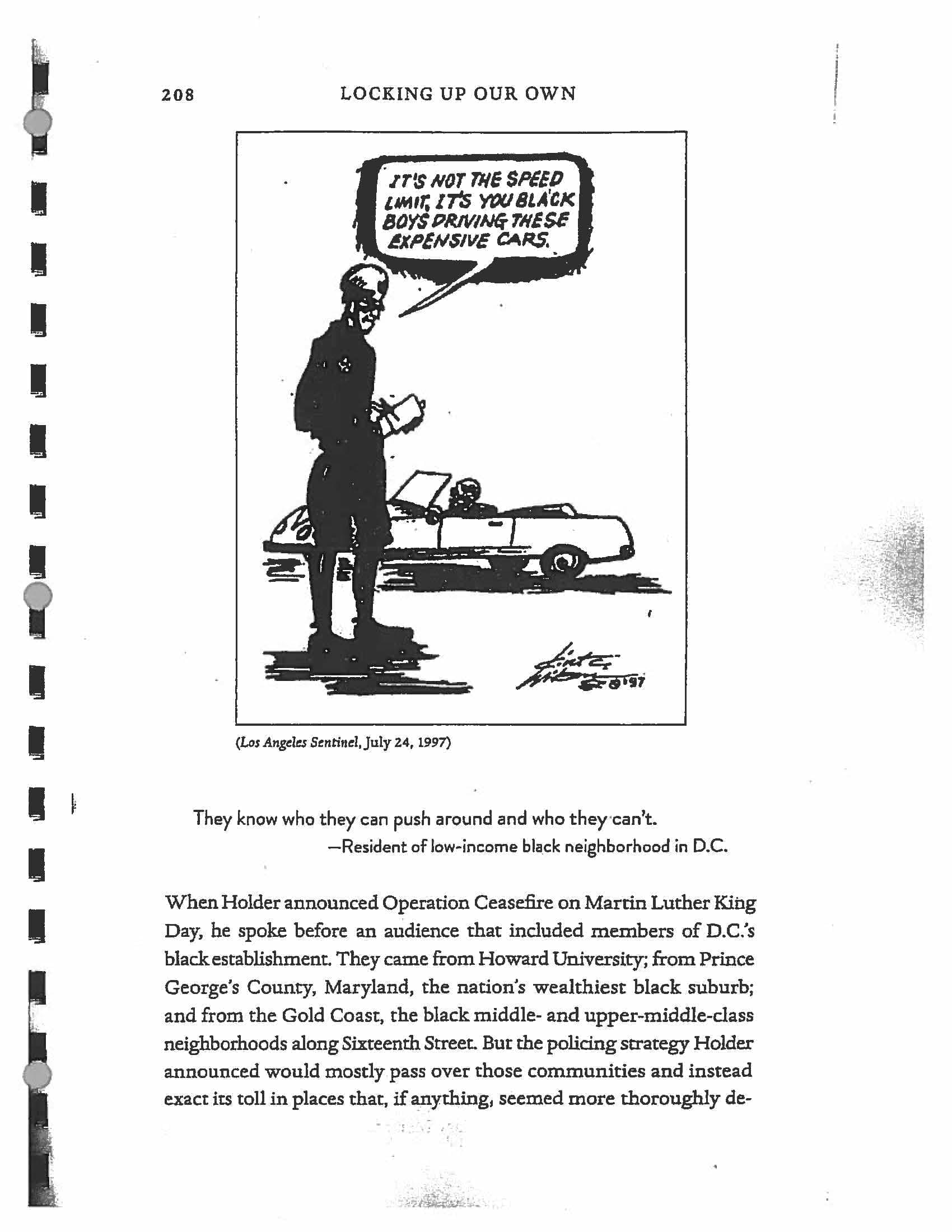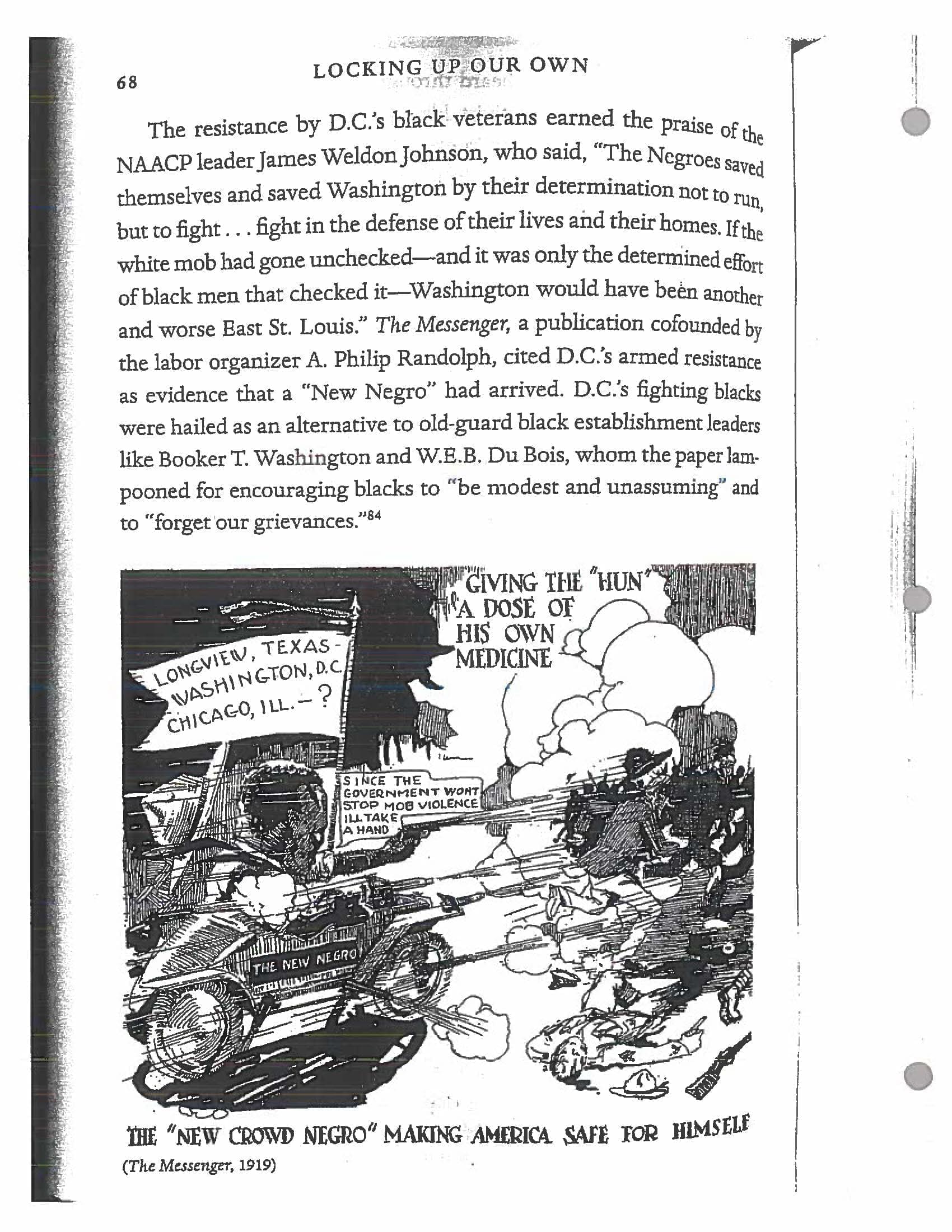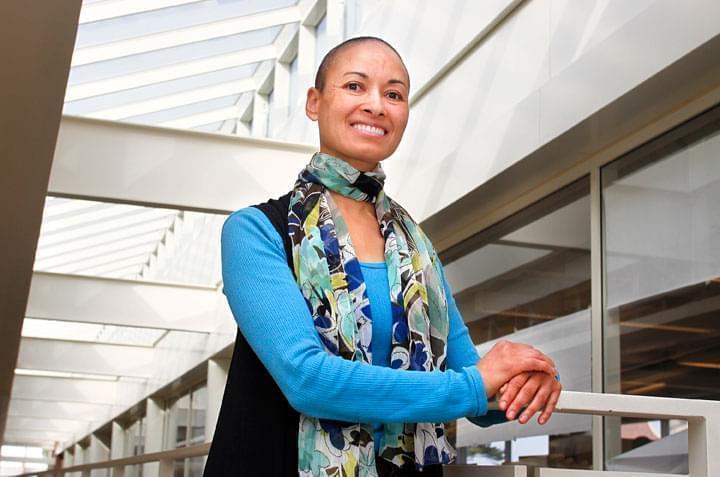The Reason Why Hundreds Of Books Were Removed From An Illinois Prison Library

The Education Justice Project offers University of Illinois classes to a select group of men at the Danville Correctional Center. Earlier this year, more than 200 books from the EJP library in the prison were removed. Courtesy of the Education Justice Project
Lance Pittman arrived at the Danville Correctional Center on Jan. 10 with multiple boxes of books, and bound printouts of articles and book chapters. Pittman coordinates a college in prison program called the Education Justice Project, which offers University of Illinois classes to a select group of men at the Danville prison.
Earlier this year, hundreds of books were removed from the college in prison program’s library inside the educational wing of the Danville prison. Documents obtained by Illinois Newsroom shine a light on why the books were removed, and who was responsible for their removal.
The boxes contained books to be used in American literature, urban communities and policy, gender in society and critical race theory classes, in addition to EJP handbooks that are handed out to students at convocation.
To Pittman’s surprise, the materials were confiscated at the prison gates. EJP staff had previously received a memo from prison administrators stating that the books were approved to enter the facility.
Prison staff found two editorial cartoons within the printed course materials. In documents obtained through Freedom of Information Act requests, the images are described as “racially motivated.”The boxes of books were reviewed by Internal Affairs — the investigative arm of the correctional center.
The cartoons — one published in the Los Angeles Sentinel in July 1997, and the other published in 1919 — are included in James Forman Jr.’s book, “Locking Up Our Own: Crime and Punishment in Black America.”
Sections of the book were copied and included in course readers for EJP students. Rebecca Ginsburg, who directs EJP and is a professor at the U of I, said the chapters of Forman’s book were intended to be used in a course on urban communities and public policy.
“That's standard practice at the University of Illinois to include chapters in course readers, especially upper division courses, from books by well regarded authors,” she said. “Are these historical documents about race relations in the United States at particular times? Yes, indeed they are. And that's what our obligation is, as a university, to discuss topics like race relations.”
Ginsburg said the images were not intended to incite violence or “anti-white feelings,” but were intended “to help students better understand historical context — that’s clearly the purpose here.”
Discovery of the editorial cartoons prompted prison staff to search the EJP library — two rooms inside the prison’s educational wing — for “any other items of concern,” according to documents from the Illinois Department of Corrections.
I am stunned that the order was made with such vague wording ‘of a controversial nature,’ because that can and obviously did mean anything, given that we see children's books.Rebecca Ginsburg, director of the Education Justice Project.
On Jan. 11, the head of the prison’s Internal Affairs unit, Charles Campbell, sent an email to the Danville Correctional Center Warden, Victor Calloway, outlining his findings. He wrote that he found “several racially motivated books,” as well as two graphic novels — one that featured a sexually graphic image — and a Black Lives Matter flier — an activist movement that campaigns to end systemic racism.
Ginsburg said she doesn’t know how the flier or the two graphic novels wound up in the EJP library. She said she would have removed the two graphic novels had she known they were there. One of the graphic novels includes a stamp indicating it was, at one point, the property of the prison’s general library.
Roughly 45 minutes after receiving Campbell’s email, Calloway sent an email to Pittman, the EJP coordinator, notifying him that all EJP classes and meetings would be on hold until further notice.
Roughly two weeks later — the week of Jan. 21 — Calloway ordered the Internal Affairs unit to remove any books or items “of a controversial nature” from the EJP library for further review.


These are photo copies of pages from James Forman Jr.’s book, “Locking Up Our Own: Crime and Punishment in Black America.” Excerpts of this book were included in course readers intended to be used by incarcerated students enrolled in the Education Justice Project at the Danville Correctional Center. The images are described in Illinois Department of Corrections documents as “racially motivated.”
“I'm stunned,” said Ginsburg after Illinois Newsroom shared this information with her this week. “I'm stunned that the order to remove books wholesale would have been coming from the warden without authority from a higher up. I am stunned that the order was made with such vague wording ‘of a controversial nature,’ because that can and obviously did mean anything, given that we see children's books… removed from the shelf.”Staff removed more than 200 books from the library’s shelves — most about race, identity and education.
The confiscation of the books at the prison gate delayed the start of EJP’s spring semester. Prison staff lifted the suspension in late January, but neither the books taken from the library nor the books Pittman brought to the prison for classes were returned.
FOIA’d emails show Ginsburg exchanged multiple emails with prison officials over the next month. In an email to Assistant Warden Felicia Adkins on Feb. 8, Ginsburg wrote that the program must offer Danville students the same level and quality of education that’s offered to students on the U of I campus.
“While I believe the calculus and machine learning classes can continue without reading materials given the nature of those subjects, it’s difficult for me to imagine how we could, with integrity, offer the other four classes without providing readings,” Ginsburg wrote. The other four classes included an introduction to critical race theory in education, gender in society, American literature and urban communities and public policy.
Calloway responded by saying that the quantity of material they brought in was too much to be reviewed prior to the start of the semester. He wrote that course materials will be allowed in once the pages with “discrepancies” are removed.
Staff ultimately allowed the program to retain its course readers with certain pages removed.
In February, Ginsburg turned her attention to the books that were confiscated from the program’s library. She asked Calloway in an email to document what books were removed and why. No answer was provided, according to documents obtained from IDOC.
On Feb. 7, Ginsburg said she received a call from Adkins telling her they wanted the books removed.
On Feb. 8, Ginsburg received an email from Pittman stating that he had spoken with Adkins’ secretary, and she had informed him that Adkins wanted the boxes of confiscated library books taken out of the prison.
On March 7, Ginsburg wrote in an email to Adkins, “Confirming that I’ve had no response from you to my email below… it occurs to me that Lance Pittman will have to prepare a memo to remove from the facility the boxes that contain the materials DCC staff removed from the EJP library shelves. That memo will, presumably, be signed by you. Perhaps that’s a way of moving forward.”
She said she asked for documentation because she wanted proof of what had happened.
“I wanted them to be made accountable for what they had done,” she said.

This is a photo of a Black Lives Matter flier found by Danville Correctional Center staff inside the EJP library.
The department initially claimed that the books were removed because they hadn’t been properly reviewed, not because prison staff were concerned about racial material.
In an emailed statement, a spokesperson for IDOC, Lindsey Hess, wrote that the administration and the new director for the department, Rob Jeffreys, are “fully committed to ensuring all IDOC residents have access to the resources they need to advance their education, including publications that address social and racial justice.”
Hess did not address specific questions regarding why materials about race were removed from the prison.
Campbell, from the Danville prison’s Internal Affairs unit, agreed to Ginsburg’s request. On March 8, he wrote in an email, “I will make a list of the books and move them to the main gate area so you can return them to the University of Illinois today.”
Between March 6 and May 13, Illinois Department of Corrections officials scheduled multiple calls and meetings with U of I College of Education Dean James Anderson. U of I Chancellor Robert Jones called former IDOC Director John Baldwin on April 24, according to IDOC documents.
Prison administrators, including former director Baldwin and Assistant Director Gladyse Taylor as well as the prison system’s chief legal counsel exchanged a flurry of emails between April and June. It’s unknown what was said because copies of those emails obtained through a FOIA request were almost entirely redacted.
Ginsburg was notified April 15 that she was barred from visiting any IDOC facility. That order was lifted on May 6. Documents obtained by Illinois Newsroom offer no explanation for why Ginsburg wasn’t allowed into any prisons.
Investigations into Ginsburg and EJP
Earlier this year, Ginsburg was the subject of an investigation led by the Internal Affairs unit within the Danville prison. Initiated late last year, the investigation began after prison staff found a printout of an email exchange between Ginsburg, who is African-American, and a black volunteer for the EJP program. The email was sent in 2014, and in it, the volunteer expressed concern and frustration that EJP was not an inclusive space for black volunteers.
Last December, mailroom staff at the prison also found an envelope containing six photos that were screenshots of an EJP event that were taken from Ginsburg’s Flickr account. The letter was addressed to an inmate at the prison, and sent from Pelipost, an app that lets users send photos from their smartphones to people in prison. That same month, prison staff also found a memory card in a folder that Ginsburg planned to bring into the facility. She was ordered to return it to her vehicle, according to IDOC documents.
Multiple inmates, EJP volunteers and staff were interviewed as part of the investigation. Investigators asked questions about racial issues within EJP, as well as what was discussed during a diversity and inclusion meeting, and who provided the inmate with the email between Ginsburg and the volunteer. Prison staff also asked about the contents of the program’s handbook, which lists an office number and information about the program’s finances, and if EJP volunteers and staff had ever brought reading materials into the facility without prior approval.
Ultimately, the prison’s Internal Affairs department was unable to determine how the inmate got the email. They concluded that Ginsburg was trying to return an SD card to the prison because it belonged to an EJP camera at the facility. Investigators also determined Ginsburg violated a policy when she posted EJP photos in a correctional setting without approval on social media, including Facebook and Flickr.
In a report listing Campbell as the investigator, the case summary states: “this office is unable to determine reading materials discussing controversial topics that were recovered in the EJP resources rooms were allowed into the facility despite Ginsburg’s allegation that all materials were approved by the administration.”
Ginsburg’s response

Rebecca Ginsburg directs the Education Justice Project, and is a University of Illinois professor. She said she was shocked to learn why books, mostly about race, were removed from the Danville Correctional Center.
Ginsburg said she was never informed she had violated an IDOC policy, or was briefed on the outcome of the investigation.
“Family members of the EJP students, supporters of higher education in prison, funders of our program appreciate the fact that we post photos on our website of the program and the good that it does,” Ginsburg said. “I make no apologies for posting those photos... If it was, in fact, the case found that I was in violation of those policies, this is the first time hearing of it.”
Ginsburg said she also never learned why she had been locked out of the prison earlier this year. She said she feels like the program has been targeted by prison staff.
“I’ve come to expect that I will be treated this way by the Department of Corrections,” she said.
Ginsburg said she believes there’s a connection between the email criticizing the program for not being racially inclusive and the removal of books, which were mostly about race.
“While I believe there is a connection, I’m confused about why there should be a connection between an email written in 2014 and the removal of books from our library five years later,” she said.
Documents provided by IDOC also indicate that while 94% of the Danville prison staff is white, 61% of the inmate population is black, and 18% are Hispanic.
Ginsburg said EJP students frequently discuss race — in addition to gender, class and trauma.
“We talk about all sorts of difficult issues. We couldn’t be a university program without addressing them,” she said.
IDOC’s Publication Review Policy
In an emailed statement, Hess, an IDOC spokesperson, wrote that, “the Department is developing and implementing the necessary system-wide policy changes to ensure similar situations do not occur in the future” — referring to the removal of the EJP books.
Hess said the agency will change their publication review policy beginning this fall. The changes will include an appeals process and making the prison system’s central publication review committee the ultimately authority on what material is and is not allowed inside state prisons.
The Department is developing and implementing the necessary system-wide policy changes to ensure similar situations do not occur in the future.Lindsey Hess, spokesperson for the Illinois Department of Corrections
During a legislative hearing on the book removal in July, the new director of IDOC, Rob Jeffreys, announced his intention to revise the department’s policy regarding what books can and cannot enter the prison.
He didn’t address why the books were removed, but Jeffreys said “there was a lack of communication, there’s a lack of expectation. There wasn’t a sound process. And there’s much-needed policy oversight.”
The department’s publication review policy dictates that all prisons must maintain a list of facility approved, conditionally approved and disapproved titles. According to documents obtained through FOIA, the Danville Correctional Center does not maintain such a list, and neither do nine other correctional centers throughout Illinois.
The policy indicates that material may be barred from a prison if it meets one or more criteria ranging from whether the material is obscene to whether it encourages or advocates for violence and hatred. The policy does not list material of a controversial nature as grounds for censorship.
The IDOC also faces multiple lawsuits regarding censorship of reading material. The attorney involved in those cases, Alan Mills, has said the department does not follow its own rules when it comes to publication reviews.
Ginsburg said she is hopeful Jeffreys will fulfill the promises he made during July’s hearing. She is one of a number of advocates for higher education in prison that have launched a campaign around decreasing barriers to educational access inside state-run prisons.
She said the removal of the books “has served to really highlight the nature of the challenges we undergo in trying to provide higher education in that prison.”
Christine Herman contributed to this report.
This story was updated at 12:10 p.m. Aug. 16 to include new information provided by the Illinois Department of Corrections.

Links
- Lawmakers To Question Officials About Removing Hundreds of Books From A Prison Library
- Danville Prison Removes Books; Foreign-Owned Farmland; Saving For Retirement
- ‘It’s Heartbreaking’ Authors Criticize Removal Of 200 Books From An Illinois Prison Library
- Illinois Prison Removes More Than 200 Books From Prison Library
- Department of Corrections Director Blames Illinois Lawmakers For Lack Of Spending On Prison Books
